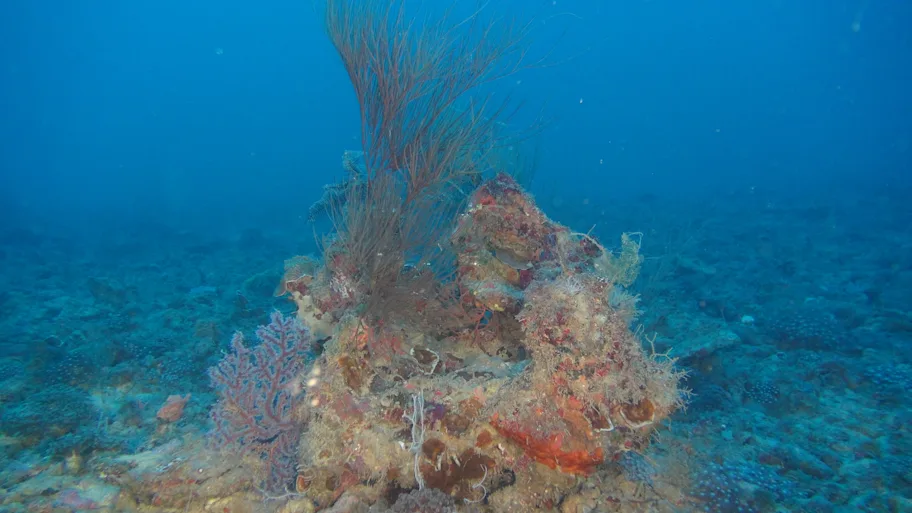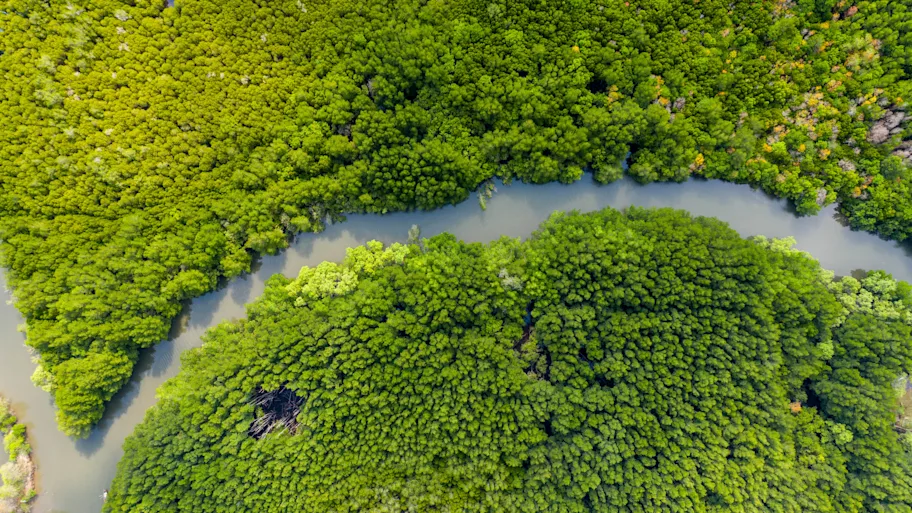
- Science news
- Featured news
- First-ever video surveys of the Great Amazonian Reef System highlight urgent need for protection
First-ever video surveys of the Great Amazonian Reef System highlight urgent need for protection

Dr Ronaldo Francini-Filho (left) ready to dive to depths of 220m to explore the Great Amazonian Reef System
New research reveals that the newly discovered Amazonian Reef is much larger, deeper and more diverse than originally thought — and potentially threatened by oil exploration.
— By Brittany Alexander
The first-ever exploration of the Great Amazon Reef System reveals it is six times larger than initially thought, home to diverse habitats and species — and also located in areas planned for oil exploration. Published in Frontiers in Marine Science, the study highlights an urgent need for establishing marine protected areas to safeguard the biodiversity and sustainability of the region.
Perspectives on the Great Amazon Reef: Extension, Biodiversity, and Threats****► Read original article► Download original article (pdf)
The existence of a Great Amazon Reef has been hypothesized since the 1970s — but only confirmed in 2016, when its size was initially estimated at 9,500 km2. The new study reports that the reef is much larger — 56,000 km2 — as well as 220 meters deep and with a high diversity of habitats, including coral reefs, sponge bottoms and rhodoliths (a type of algae that build calcium carbonate structures).
River mouths are an unusual place to find reefs. Professor Fabiano Thompson, author on the paper and Professor at the Federal University of Rio de Janeiro, Brazil, suggests that the Great Amazonian Reef System may be chemosynthetic — depending primarily on energy obtained from minerals from river run-off. This is in contrast to shallow-water coral reefs, which mainly use sunlight for energy.
“Having the opportunity to finally dive in such unknown waters and to find answers to long-standing questions was an amazing experience,” says Dr Ronaldo Francini-Filho, first author and researcher at Federal University of Paraíba, Brazil. “We have seen possible new species and every dive offered a new discovery. We are far from understanding basic aspects of the biodiversity of the Amazon Reef.”
Less than 5% of the reef area has been surveyed so far and more knowledge is needed to help plan the use of the area. Worryingly, the study shows that the reef extends into areas where oil companies — including Total, Petrobras and BP — have plans for exploratory drilling. This is a serious threat to the biodiversity and sustainability of the region.
“Given the clear connection between the Amazon Forest, the Amazon River and the Amazon Reef — and the importance of the area in terms of biodiversity and climate regulation — we invoke the precautionary principle and call for the urgent need for the implementation of an ecologically representative network of marine protected areas,” explains Dr Francini-Filho.
These first observations of the reef received nearly 400,000 views within two days of publication — making it one of the most-viewed articles ever published by Frontiers.
“This article has conservation implications that are influencing the process of licensing for oil exploration and is raising awareness for the urgent need to improve knowledge and protect the Amazon Reef,” explains Dr Francini-Filho.
“Frontiers’ fast-track open-access model is critical as it makes scientific advice freely available in time to influence political decisions.”
Original article: Perspectives on the Great Amazon Reef: Extension, Biodiversity, and Threats
REPUBLISHING GUIDELINES: Open access and sharing research is part of Frontiers’ mission. Unless otherwise noted, you can republish articles posted in the Frontiers news blog — as long as you include a link back to the original research. Selling the articles is not allowed.






